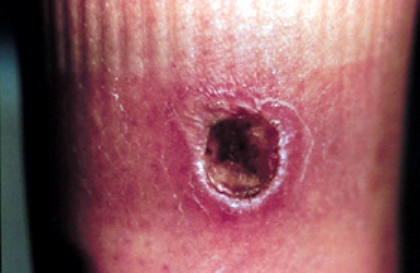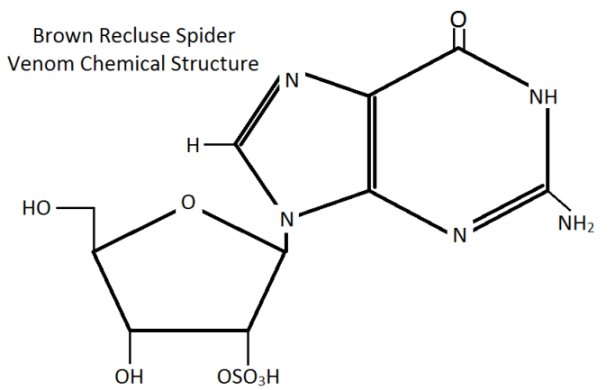The Brown Recluse Bite
Perhaps the most well-known characteristic of the brown recluse is its venom. Bite victims of the brown recluse have been diagnosed as such for only a few hundred years. However, many bites people have reported were misdiagnosed as brown recluse bites. In the southern United States, almost all painful lesions people wake up with in the morning are attributed to the brown recluse. Nevertheless, a bite from the brown recluse spider is most often nothing to take lightly.

http://www.brown-recluse.com/bitephotos.html
A brown recluse bite will affect every person differently depending on how much venom is injected and how sensitive the person is to it. A bite may go unnoticed at first, but eventually necrosis (or destruction) of the tissue around the bitten area will occur. In mild cases, a bite will only cause a small red mark with no scarring. However, severe cases can result in a large wound that takes many months to heal. In this case, a "volcano" lesion forms that can range from the size of a thumbnail to the size of a hand print. In rare cases, amputation and even death may be the result of a bite. The photo shown above is a very mild reaction to a brown recluse bite.

This drawing is modeled after one created by Dr. Matthew Gronquist of SUNY College at Fredonia, New York
The main chemical within the venom of the brown recluse is the enzyme sphingomyelinase D. Unlike most venoms that attack the nervous system, this enzyme works to destroy cell membranes. All species of the Loxosceles genus contain this enzyme within their venom. As previously stated, this enzyme causes severe necrosis of the tissue it infects. This toxin affects only certain mammals, however, including humans, guinea pigs, and rabbits, but not including mice and rats. Female brown recluses have a much higher concentration of venom than males (ScienceDirect.com).
Click here to see some fun facts about the brown recluse!